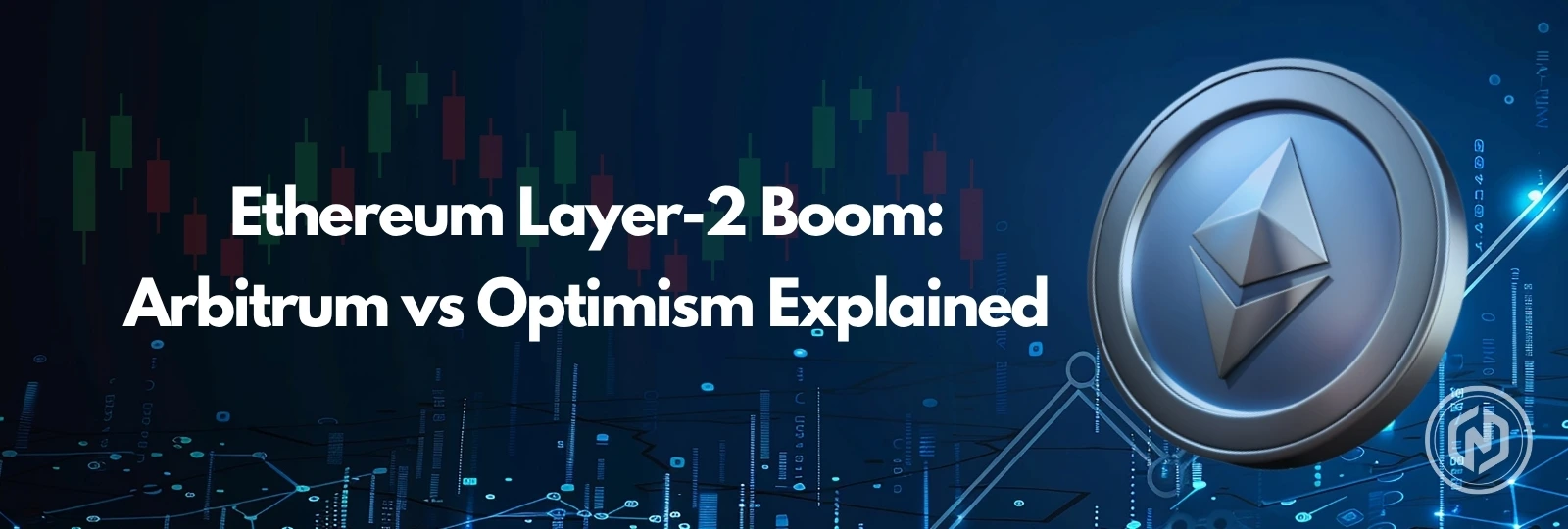The exponential expansion of Ethereum reached its limit between 2020 and 2022: network congestion, extremely high gas prices, and slow transactions left users and developers frustrated. Layer-2 (L2) scaling solutions, particularly Optimistic Rollups such as Arbitrum and Optimism, have arisen to take the load of computation and data off the mainnet, deflating cost and latency by orders of magnitude.
By the mid of 2025, billions in TVL, strong developer communities, and real adoption have led to a quiet, but a battle cry has taken hold: “The Layer-2 revolution is no longer tomorrow technology, it’s infrastructure today.” For a foundational look at how Layer-2 solutions are transforming Ethereum transactions, this detailed guide offers great context.
What Are Optimistic Rollups?
Where Ethereum Layer‑1 processes all transactions, Optimistic Rollups combine sets of off-chain transactions into batches and only post summaries to Ethereum, and instead rely on the assumption that most users are honest unless called to account.
Through this, high throughput and EVM compatibility, driven by how the Ethereum Virtual Machine operates, allow developers to transfer and redeploy Solidity smart contracts with minimal effort. Arbitrum and Optimism take advantage of this model, just with minor technical differences: Arbitrum uses multi-round fraud proofs, whereas Optimism uses single-round fraud proofs.
Arbitrum: The Rollup Dominator
- TVL and Usage: More than $12 billion TVL by early 2025, quadruple the $6 billion TVL on Optimism.
- Transactions and Addresses: Transits more transactions per day than Ethereum does alone; features a higher user base and a larger number and variety of protocols (≈256 vs 119 protocols).
- Ecosystem Strength: Strong foundation of native DeFi that is supported by GMX and other platforms such as Radiant, Camelot, Treasure DAO, etc (≈25% of TVL).
- Governance & Token (ARB): ARB token (market cap ~$2.7B, ~$2.18) governs the Arbitrum DAO, with holders having control over governance, upgrades, and how funds are spent.
- Credibility: Supported by Offchain Labs and well-mentioned in crypto media as the de facto L2.
Optimism: The “Superchain” Challenger
- TVL: It had approximately 24-25 percent of L2 TVL on about 6- 9 billion in TVL.
- Architecture & Vision: Uses single-round fraud proofs and promotes an interoperable Superchain based on the OP Stack.
- Community and ecosystem: Smaller (164k Discord members, and 164k Discord members approximately 223M transactions, approximately 648k Twitter followers) still contains essential dApps such as Synthetix and others.
- Technological Advantage: Lays stress on modularity, OP+ZK hybrids, and rapid prototyping of public goods and grant-based development.
Credibility is upheld through dignity and control of its public communications, constant ecosystem updates, and extensive developer advocacy.
Challenges & Considerations
- Decentralization vs Centralization: Whereas L2s share the security of Ethereum, they can create the risk of centralization by which they propose sequencers.
- Liquidity Fragmentation: There are also too many rollups that distribute liquidity at a thin level-innovative cryptographers are coming up with standardized tokens that operate on multiple rollups (e.g., UAT20).
- MEV, Optical Arbitrage, MEV (Maximal Extractable Value) continues on rollups: analysis indicates arbitrage opportunities between L1 and L2, 0.03 and 0.05 percent of trade volume.
- User Experience: Enterprise multi-boundary asset transfers are slow and expensive, and exit delays introduce UX friction.
- Security: The migration of the current Ethereum contracts may present security concerns; their migration to Arbitrum may the risks and differences.
Wider Comparative Landscape
- Besides Optimistic Rollups, other L2s are on the way: Currently, the type of L2 that provides a higher cryptographic guarantee, scalability, and potential future benefits is zk-Rollups (zkSync, StarkNet, Scroll), which comprises 15% of L2 TVL ($3.5 B).
- Sidechain-like Optimized L2s: Sidechain-like, with EVM-compatible chains offering different security assumptions and low fees, Polygon, Base (formerly Coinbase), and Mantle, along with Boba, are all part of the family of Optimized L2s.
These two solutions are putting a bet on the different trade-offs: cost, security model, speed, decentralization, and interoperability.
Metrics Breakdown: Arbitrum vs Optimism
| Metric | Arbitrum | Optimism |
| Total Value Locked (TVL) | $12 billion | $6–9 billion |
| Daily Transactions | 1.9 million | 1.06 million |
| Active Wallet Addresses (24h) | 265,000 | 124,000 |
| Average Transaction Fees (USD) | $0.004 | $0.0031 |
| Number of DeFi Protocols Integrated | 256+ | 119 |
| % of Native TVL | 54% from native protocols | 29% from native protocols |
The Scaling Wars: Who Will Win?
- Arbitrum: AMTG with strong TVL, technological pioneer (NiTro upgrade), and cultural leadership; probably locked in as the second layer of DeFi.
- Hope: Wagering on neighborhood unity, OP Stack implementation, grants, and mutually used infrastructure.
- zk-Rollups: More technologically advanced but more expensive–strong teams; have the potential to support long-term, everyone, and institutional adoption of DeFi.
- The Interoperability Layer: The standards, such as UAT20 (liquidity unification) and advanced cross-rollup bridges, will play the crucial role.
Final verdict? It appears most likely that a multi-chain L2 future is possible in which layers exist, specialize, and interact.
Outlook: Ethereum’s Layer‑2 Horizon
The roadmap by Ethereum to reduce the costs of data transmission is EIP‑4844 Proto‑Danksharding, which will be synergetic with the adoption of Layer-2. As the L2s prosper:
- Volume Increase: The transaction volumes on Optimistic Rollups are growing higher than on Layer-1.
- Liquidity Consolidation: There will be a consolidation of emerging standards and alleviate fragmentation.
- New Paradigms: Rollups could even become modular Superchains, and even Layer 3 architecture.
- Mainstream On-Ramps: User-friendly products such as the Coinbase Base introduce mass adoption through user-friendly onboarding.
Conclusion
Ethereum Layer-2 boom is a new chapter in the history of blockchain. Arbitrum is the DeFi-infrastructure-matured adult choir: Optimism is constructing a modular, community-oriented future: zk-Rollups are breaking new efficiency and safety grounds. The Scaling Wars are not a zero-sum game, but a cooperative conflict of ideology, technology, and vision. The victors will not be individual chains, but a web of ecosystem-scale rollups providing a fast, cheap, secure, and composable Web3 experience.



